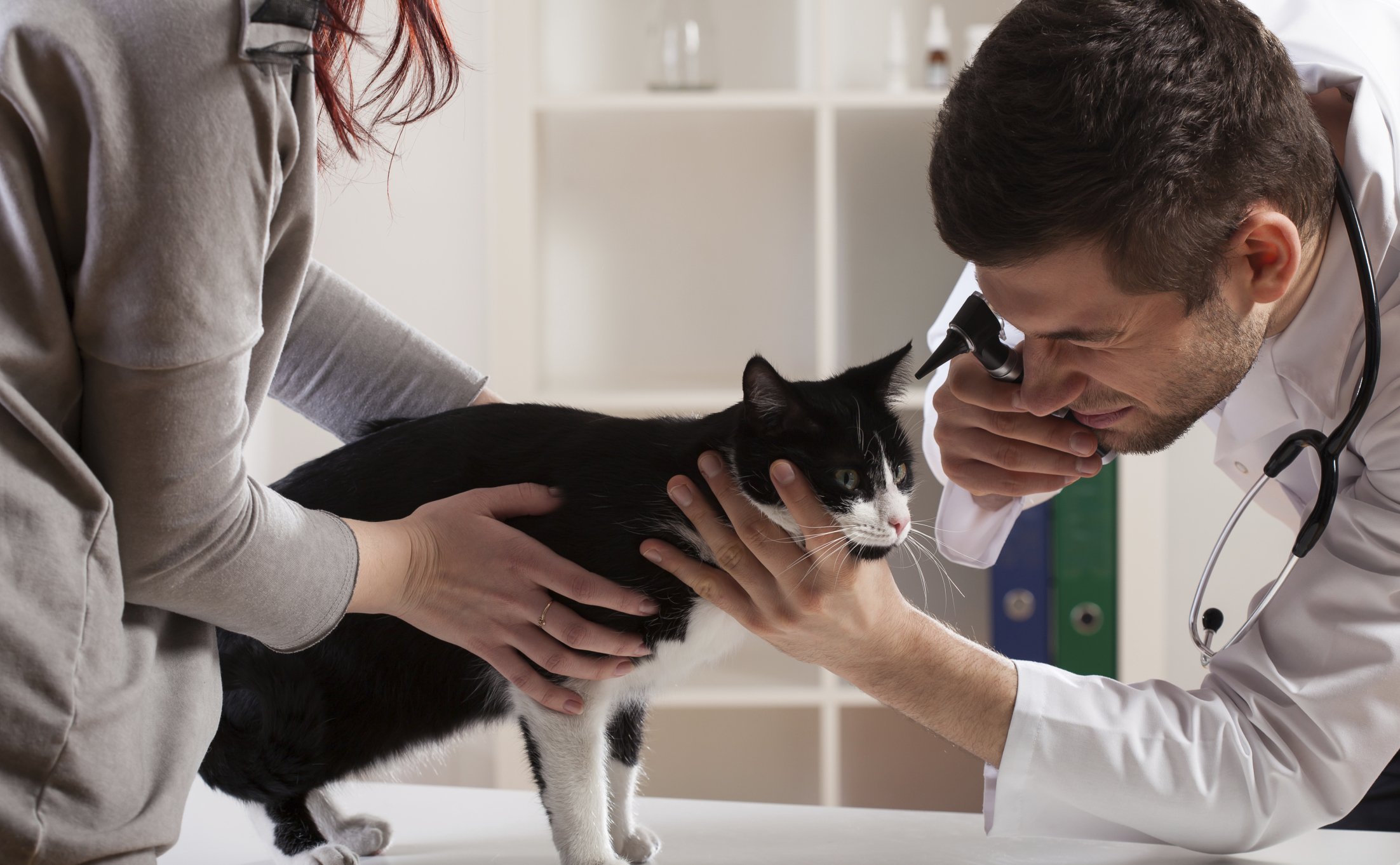Best treatment for ear tumors
Q Recently, Marabelle, my 11-year-old Himalayan mix, was diagnosed with tumors in her ears and the only option offered by my veterinarian was to have her entire ear canal surgically removed. Even if I could afford this surgery, I am not convinced that it would contain the tumors. I also do not feel good about putting her through the suffering for this procedure.
She is very timid and afraid of strangers. My only other option now is to put her to sleep, which I am ready to do to save her from suffering. Currently, she only scratches at the back of her ears and shows very mild loss of hearing. I am on disability. I need to know if there is an alternative for this condition.
Renata Smith
A Dear Renata: I’m sorry to hear about Marabelle’s problems. It is hard to comment on your particular situation without knowing what type of tumors are present and how extensive the problem is, unfortunately.
I can say that it is not uncommon for an older cat to develop tumors in the ear canal. In most cases, the tumors themselves are benign, that is, non-cancerous and not likely to spread to other organs in the body. However, their presence in the ear canal can cause problems for the cat.
THINKSTOCK


Tumors in the ear can predispose cats to ear infections. Ear infections, and sometimes the tumors themselves, can be very uncomfortable and can cause itching and pain.
If the middle or inner ear is affected, the cat may experience problems with balance and coordination. Treatment depends on the number, size and location of the tumor(s). In many cases, surgery is the preferred treatment. As you noted in your letter, this type of surgery is quite costly and does require post-operative pain medication.
You’ll have to ask your veterinarian if there are other alternatives beside surgery. Oral antibiotics and topical medications (antibiotics and anti-inflammatory medications that are put directly into the ear) may help control the problem, but ultimately, most ear canal tumors will eventually require surgery.
However, like with many surgeries, once the early period of discomfort passes — usually within three to five days — there should be no long-term negative effects.
Arnold Plotnick, DVM, DACVIM
Catnip contributor
Advice for skin disorders
Q What is the latest information on eosinophilic granulomas? My seven-year-old cat had one removed from the back of her tongue two years ago, but it has grown back. She has also had a problem with rodent ulcers on her lips. She has received steroid injections and now takes half of a Dexamethasone pill three times a week. Is there anything else that can help her?
Lawrence Rutherford
A Dear Lawrence: The eosinophilic granuloma complex (EGC) is a collection of skin disorders in cats that are often grouped together because they display this same underlying characteristic — infiltration of the skin by eosinophils. This is a type of inflammatory blood cell that is commonly associated with allergic or parasitic diseases.
The cause of EGC is not known, but an underlying allergy such as flea allergy, atopy (allergy to inhaled environmental allergens) or food allergy has long been suspected. A genetic predisposition to EGC has also been postulated. However, most of the time, the underlying allergen is never discovered.
Any age cat may be affected, but it is most common in young to middle aged cats. In some cats, more than one type of eosinophilic skin disease can occur at the same time. There are three manifestations of the feline EGC: the indolent ulcer, the eosinophilic plaque and the eosinophilic granuloma.
The indolent ulcer (sometimes referred to as rodent ulcer) commonly appears as an erosion on the margin of an upper lip. Both lips can be affected, but in most cases, it is unilateral. They appear reddish brown and are well-demarcated and hairless. Sometimes, they are painful and affect a cat’s willingness to eat.
Eosinophilic plaques can appear anywhere on the skin, but they are most commonly found on the abdomen and the inside of the thighs. They may be singular, or there may be multiple lesions. They appear raised, red, moist and well-circumscribed. They are very itchy, and cats lick them constantly. Analysis of the blood often reveals an increased number of eosinophils in the bloodstream as well.
Eosinophilic granulomas (also called linear granuloma or collagenolytic granuloma) often occur down the back of the thigh, on the face or in the mouth, especially on the tongue or the roof of the mouth. When they occur on the skin, they tend to be yellow or pinkish in color, raised, hairless, with a characteristic linear configuration. When they occur on the face or in the mouth, they tend to appear more nodular and cause the lower lip to swell, giving the appearance of a “fat lip.”
Diagnosis is usually made based upon their visual appearance. However, sometimes a biopsy is necessary to rule out disorders with similar appearances. The optimal treatment would be avoidance of the offending allergen. Strict flea control is essential, since flea allergy may be a potential trigger for EGC. A feeding trial with a hypoallergenic diet may be needed to identify an underlying food allergy. In most cases, the allergen cannot be identified, and administration of immunosuppressive drugs is necessary to control the clinical signs. These drugs can be given in pill form, or as a long-acting injection.
The prognosis varies, with young cats often faring best. If your cat does not respond to oral dexamethasone, you should consult your veterinarian about using oral prednisolone. Oral medications, on a tapering dose schedule, are better for your cat than long-acting injections in terms of side effects..
Arnold Plotnick, DVM, DACVIM
Catnip contributor
A cat with a tuna preference
Q I have a five-year-old cat that I adopted from a shelter as a kitten. Spruce has been a wonderful companion, with good behavior and a clean bill of health at all of her wellness exams. However, I have a question regarding her nutrition.
THINKSTOCK


She will only eat tuna flavored varieties of canned cat food. She is not picky about the brands. I worry about the reports about excess Mercury in canned tuna and I want to protect her health. Any help you can give will be much appreciated.
Delores Levanthal
A Dear Delores: I share your concerns. Although to my knowledge mercury toxicity has not been reported in cats, I wouldn’t want to feed a cat a high mercury diet on a daily basis long-term. Maybe you can find a different type of fish-based canned food that she likes, or add just a tiny bit of tuna-based food to other types of foods until she gets used to eating them?
Or maybe you can save some tuna juice from the next can that you open for yourself. Freeze it in an ice cube tray and put a small amount on the non-tuna diet to encourage her to eat it. (However, I don’t recommend that you do this if your cat has heart disease or high blood pressure due to the salt content).
We already know that cats can be pretty stubborn, but I bet with persistence you could gradually increase your options to some non-tuna foods.
Cailin Heinze, VMD, MS, DACVN
Veterinary Clinical Nutritionist
Cummings School of Veterinary
Medicine at Tufts University



